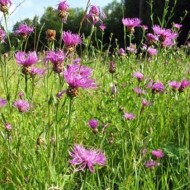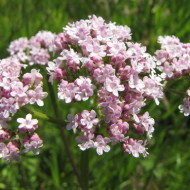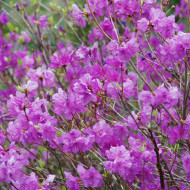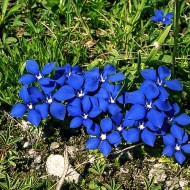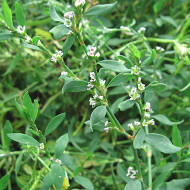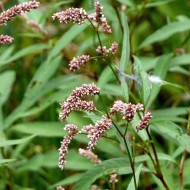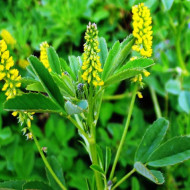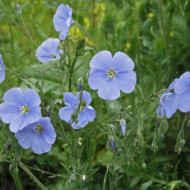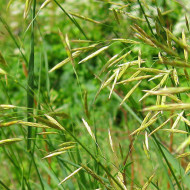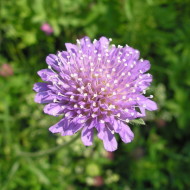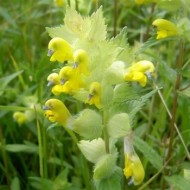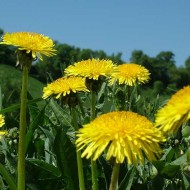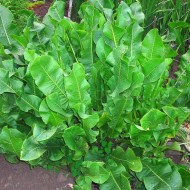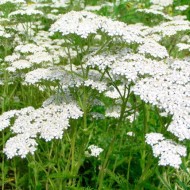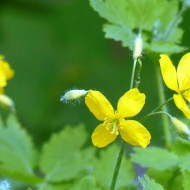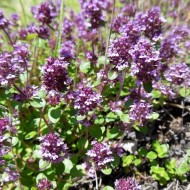Common meadow grasses and flowers in nature: 40 varieties with a photo
Content
- 1 General characteristics and benefits of meadow grasses
- 2 Video "Medicinal meadow herbs"
- 3 The most popular meadow flowers and flowers with a photo
- 3.1 Althea officinalis
- 3.2 Spike amaranth
- 3.3 Pansies
- 3.4 Ledum
- 3.5 Valerian officinalis
- 3.6 Cornflower meadow
- 3.7 Cornflower blue field
- 3.8 Meadow carnation
- 3.9 Meadow geranium
- 3.10 Highlander pepper
- 3.11 Bird highlander
- 3.12 Gentian
- 3.13 Goose bow
- 3.14 Elecampane high
- 3.15 Delphinium
- 3.16 Wild onion
- 3.17 Donnik
- 3.18 St. John's wort
- 3.19 Ivan tea narrow-leaved
- 3.20 Clover red
- 3.21 Common bell
- 3.22 Field korostavnik
- 3.23 Awnless meadow bonfire
- 3.24 Flax ordinary
- 3.25 Common toadflax
- 3.26 Lupine
- 3.27 Coltsfoot
- 3.28 Mouse peas
- 3.29 Dandelion medicinal
- 3.30 Rattle
- 3.31 pharmaceutical camomile
- 3.32 Spiraea
- 3.33 Timothy grass
- 3.34 Yarrow
- 3.35 Horseradish ordinary
- 3.36 Common chicory
- 3.37 Thyme
- 3.38 Celandine
- 3.39 Echinacea
- 3.40 Eschsholzia
General characteristics and benefits of meadow grasses
The herbaceous plants that cover the meadow area form three systems:
- Grass formed by annual and creeping crops.
- Sod formed by perennials.
- General plant thickening, consisting of a variety of varieties and types of meadow grasses.
The main advantage of meadow areas is openness. All cultures growing here simply bathe in the sun, blown from all sides by the winds. Hence the main characteristic of meadow crops - love of the sun, intolerance to the shade. This should be taken into account when wanting to plant any specimens on the site.
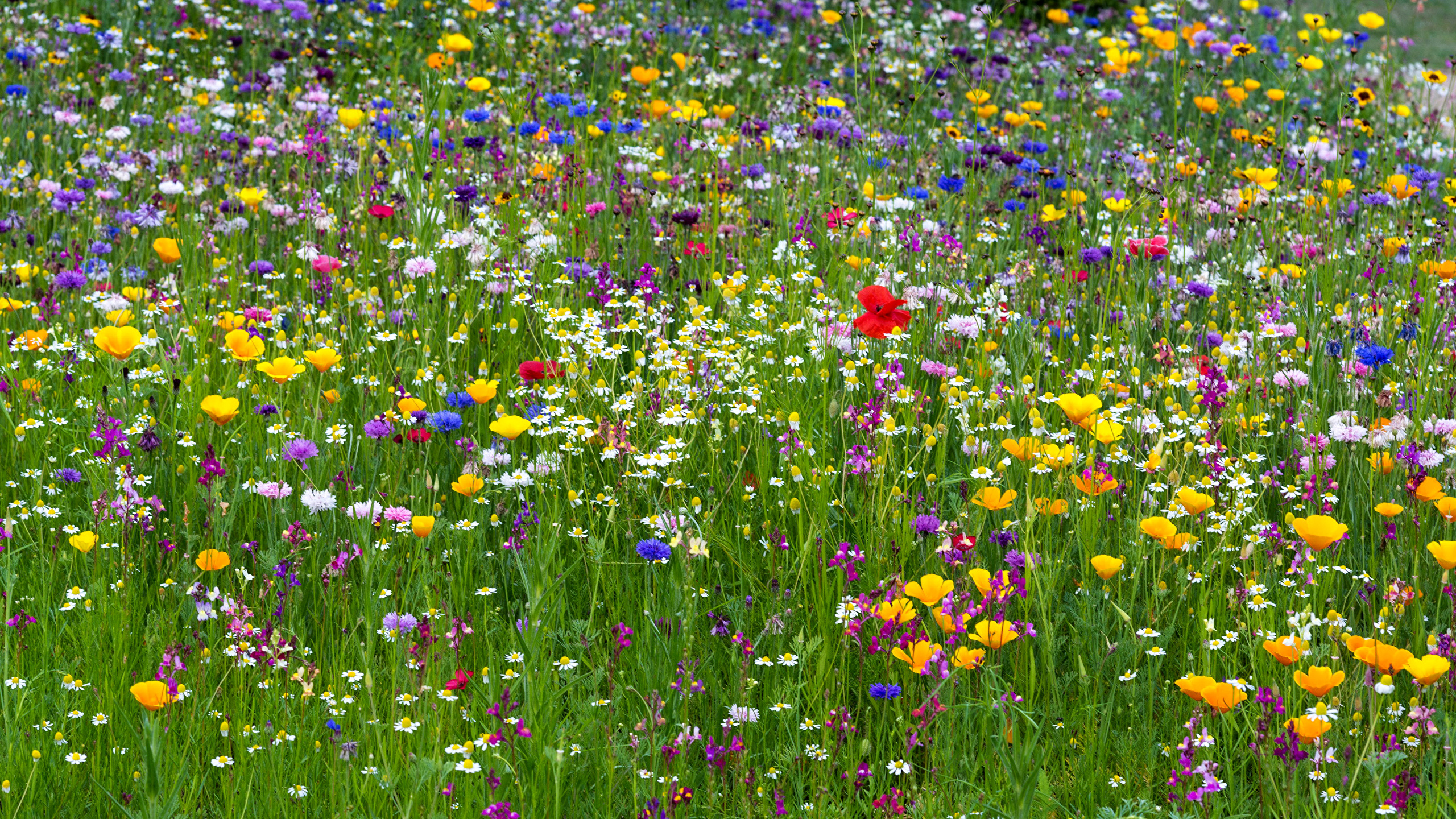
Additional characteristics - low stem, weed resistance. The roots of meadow plants are closely intertwined, forming a dense dense underground carpet that absorbs rainwater well, sucks groundwater in drought. Conclusion - meadow crops are undemanding to care and conditions.
Many herbs have medicinal properties, forming a kind of natural pharmacy. By correctly collecting and drying plants, it is possible to prepare useful decoctions and teas. Examples of using:
- blue cornflower - an excellent antipyretic, used for renal ailments, problems in the work of the bladder, as a lotion for eye ailments;
- oregano - has a sedative effect, improves the functioning of the digestive tract, digestive, bronchial and sweat glands, relieves pain and purifies the air;
- St. John's wort - has an astringent, anti-inflammatory and antiseptic effect, is useful in the treatment of wounds;
- meadow clover - helps with exhaustion and anemia, is used as an expectorant, diuretic and antiseptic;
- chamomile is a sedative (recommended for brewing tea), helps with convulsions, is used as a choleretic, diuretic and laxative.
Video "Medicinal meadow herbs"
This video shows medicinal plants that grow in meadows.
The most popular meadow flowers and flowers with a photo
Walking through the meadow, it is possible to collect a lush bouquet, in which the plants are not duplicated at all. Knowing the timing of flowering crops and picking plants by smell, gardeners achieve continuous flowering and fragrance of their backyard plots.
Althea officinalis
Perennial, stretches up to 0.5 m.The leaves are elongated-pointed, gray-green, moving away from the stem, becoming smaller with height. Single flowers bloom at the top, painted in a delicate pink color. The ability to withstand cold weather is average, it normally takes root in the Moscow region and central Russia.

Spike amaranth
At one time, he served as the progenitor for a cultivated species. It is well known to gardeners as the squid - an unpleasant tenacious weed. However, it is very valuable among collectors of medicinal herbs. It grows up to 1 m. The foliage is elongated, alternating, decreasing with height. Flowers are miniature, inconspicuous, yellow-green in color, combined into spike-like inflorescences. Germinates in any conditions and in any climate.
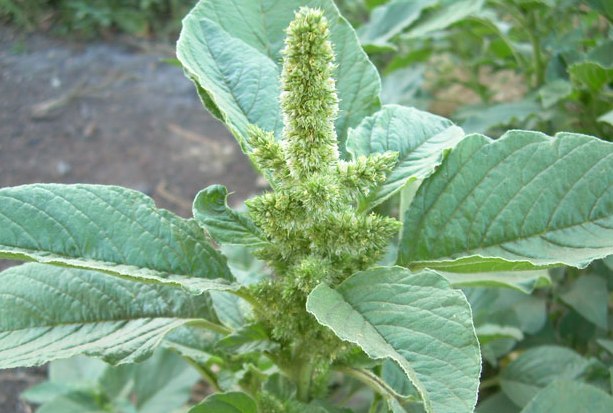
Pansies
Perennial with a stem height of 40 cm. The leaves are large at the bottom, smaller on top, alternate. Peduncles are thin, flowers are massive, tricolor (petals are blue-blue, core is yellow). The culture is extremely widespread. Resistant to frost.
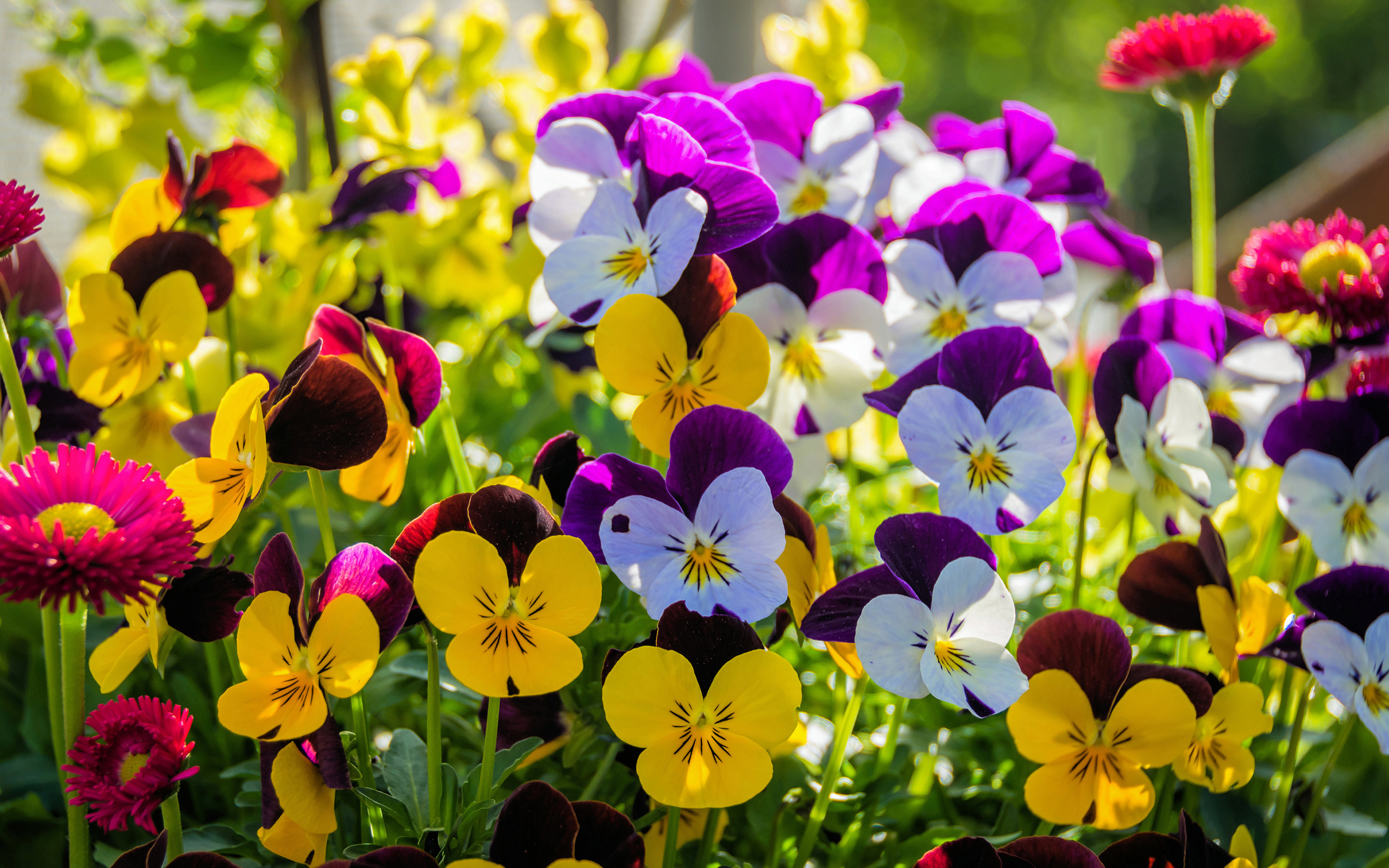
Ledum
The plant is a shrub species, tall (under favorable conditions, it stretches up to 2 m). The leaves are small, arrow-shaped, gray-green, densely cover the entire stem. Abundant flowering. Flowers are formed from 4 petals, they are white and crimson, 4 cm in diameter, united in umbellate inflorescences. They have a thick, pleasant aroma. The wild rosemary tolerates winters well.
Valerian officinalis
Perennial up to 1.5 m. Peduncles are almost glabrous, foliage is sparse. The buds are miniature, pale pink, grouped in umbrella-shaped inflorescences, they smell nice. Valerian grows in a wide variety of conditions. It is extremely in demand among herbalists - it can be problematic to find it.
Valerian is used in medicine and cosmetology, grown on many farms, as well as on an industrial scale.
Cornflower meadow
Perennial up to 1 m high. It is well known as a weed that occupies cereal crops. The foliage is gray, elongated, oval, terry. The flowers are light pink, 5 cm diagonally.
- Cornflower meadow
- Valerian officinalis
- Ledum
Cornflower blue field
Perennial. It differs from the meadow congener in the deep blue color of the buds. The attitude of gardeners towards him is not so negative.
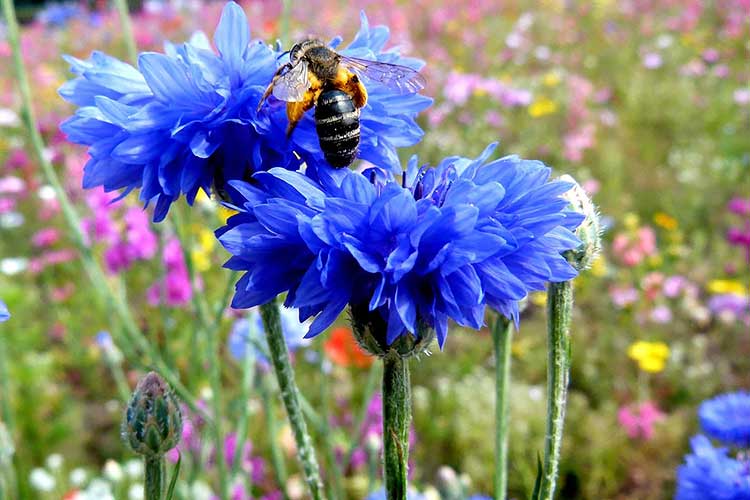
Meadow carnation
Medium-sized (up to 40 cm) perennial. The foliage is terry, linear. Flowers are red or pink, occasionally white, serrated petals. It is rare, protected by the state.
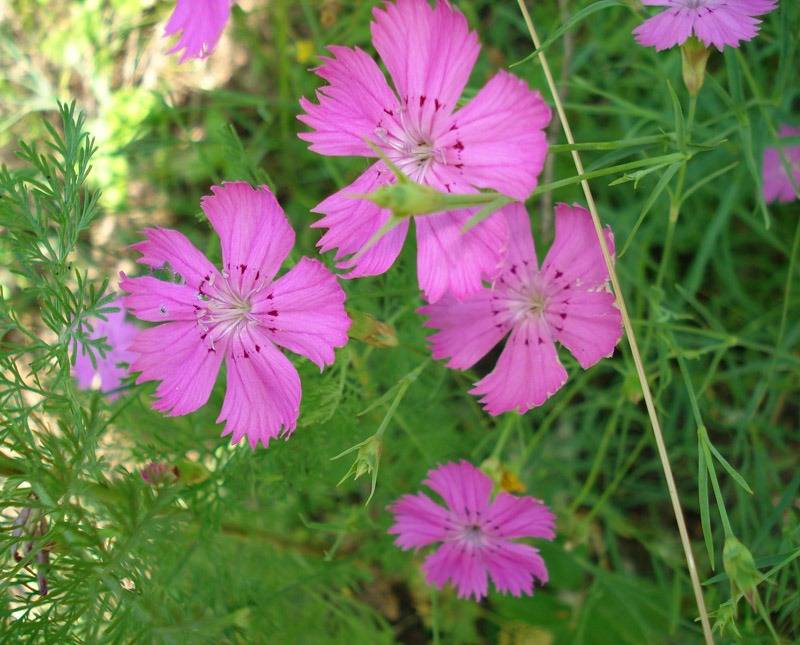
Meadow geranium
Tall (up to 80 cm) perennial. The lower leaves consist of 5 parts, the upper ones consist of 3. Flowers with 5 petals, large, lilac. Abundant flowering. Found in many regions of the country.
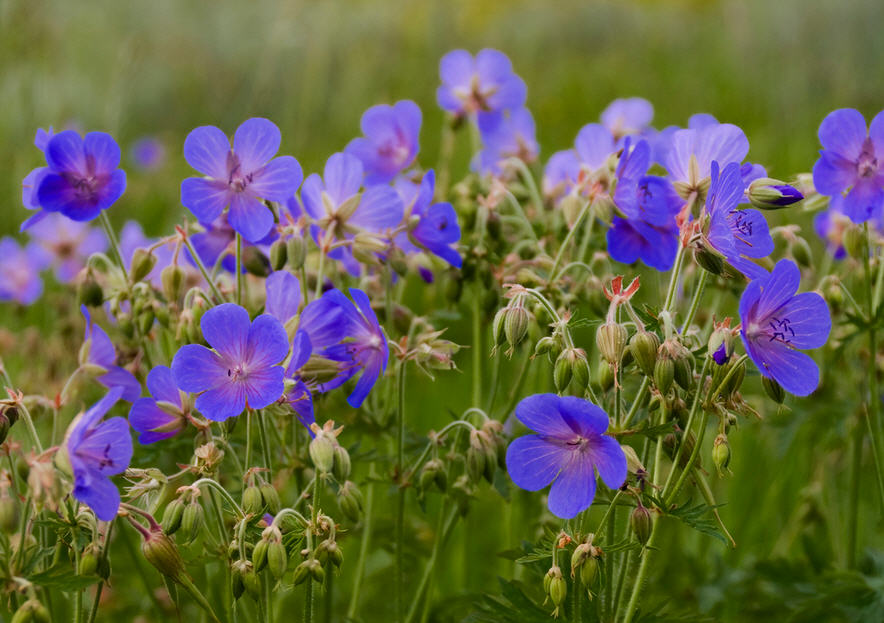
Highlander pepper
Tall (up to 90 cm), perennial. Peduncles are thin, densely covered with foliage. Feather-shaped leaves. Flowers are miniature, white, united in spikelet-type inflorescences.
Bird highlander
Medium-sized (up to 50 cm) perennial, with a creeping, highly branched stem. The leaves are small, opposite, densely dotted with the plant. The buds are invisible, white, formed in the axils of the foliage. The plant is frost-resistant.
Gentian
Shrub perennial up to 1.5 m high. Stems are erect, strong. The leaves are opposite, green. Bell flowers are massive, single, blue, blue or violet. Distributed everywhere.
- Gentian
- Bird highlander
- Highlander pepper
Goose bow
Medium height (up to 50 cm). Leaves, thin, long, are grouped into a basal rosette. The buds are small, yellowish, with a honey aroma. Loves warmth.

Elecampane high
Shrub species, tall (up to 1.5 m).The leaves are dark green, are combined into a basal rosette. The flowers are massive, yellow-orange, reminiscent of large daisies with very narrow petals. The roots are used in cosmetology and for the preparation of medicines.
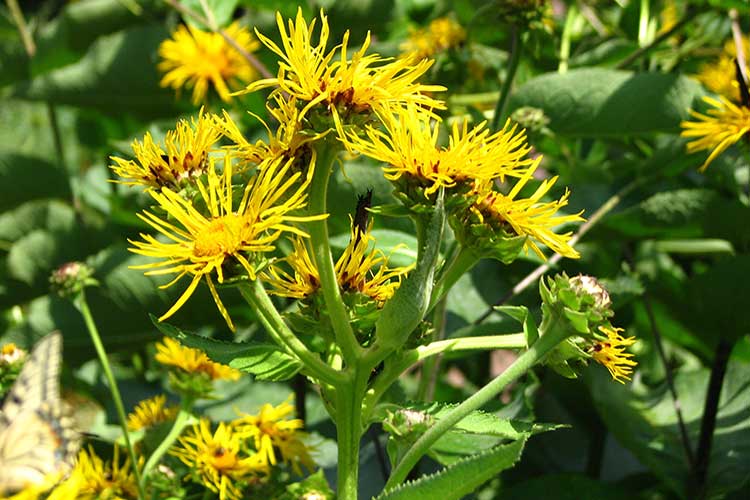
Delphinium
Shrub-type perennial grows up to 1.5 m. Arrow-shaped foliage grows from the root. The long stem forms an inflorescence in the manner of a pyramid, strewn with small but bright buds. The colors are found in white, blue, lilac, pink, red and yellow. Loves warmth. Used in households to make soap.
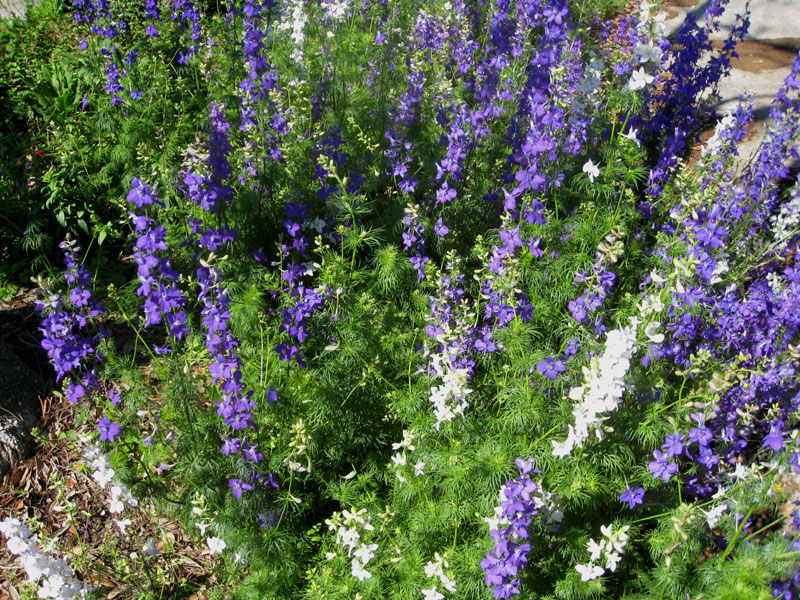
Wild onion
Shrub perennial, growing up to 50 cm. The foliage resembles the feathers of domestic onions, but thinner and more rare. The tall stem bears a spherical inflorescence.
Donnik
Tall (up to 2 m) perennial. Foliage, opposite or in pairs, covers the entire stem. The flowers are miniature, consist of 5 petals, white or yellowish, have a strong and pleasant smell of freshly cut hay. The culture tolerates drought well, is found everywhere. Among the people, sweet clover is known as a honey plant and a medicinal culture. Suitable for food, as an odorous component in the manufacture of toilet soap and tobacco.
Since the culture is poisonous, we strongly recommend that you consult with your doctor before using it in medicines, specifying the required dosage.
St. John's wort
Perennial, stretches up to 80 cm. The stem is straight, hard, densely covered with small green foliage. The top is crowned with a yellow flower with wide petals. The sap is bloody in color, the stem becomes crimson with age. St. John's wort is widespread in Russia and Ukraine. It is used as a medicinal plant. Causes health impairment when eaten by animals.
- St. John's wort
- Donnik
- Wild onion
Ivan tea narrow-leaved
Another name is fireweed. Perennial 1, 5 m high. Peduncles are thick, straight, dense, covered with thin lanceolate foliage. The flowers are pink-purple, grouped in racemose inflorescences. Fireweed is found everywhere, it is recommended as a raw material for making tea, helps with ailments.

Clover red
Tall (up to 80 cm), perennial. The peduncle is straight, branched. Foliage is oval, united in groups of 3 pieces. The buds form oval-shaped inflorescences, crimson or pink. Clover is a nitrogen fixer. Known as a honey plant, it is used in the people's pharmacy and for livestock feed.

Common bell
The life span is 2 years. Tall (up to 70 cm). Peduncles are straight, almost naked. The leaves are small, growing alternately. The flowers are purple, grouped in panicle inflorescences. The bell is adapted to temperate regions. Protected by the state.

Field korostavnik
Perennial up to 80 cm high. Peduncles are straight, crowned with a single blue-purple bud. The foliage is lanceolate, formed into a root group. The scabbard is known as a honey plant.
Awnless meadow bonfire
Tall (up to 1.5 m). Peduncles are thin, foliage is narrow. The stem branches, forming shoots with spikelet inflorescences (pinkish), as a result, the culture resembles oats. In the wind, it glows pink, resembling the tongues of a fire (hence the name). Awnless bonfire quickly captures the surrounding area, forming thickets. It gets along poorly with legumes, it is suitable for livestock feed. Looks beautiful in dry bouquets. It is not used in folk recipes.
Flax ordinary
Annual, tall (up to 80 cm) culture. Peduncles are thin, straight, at the end they form a peduncle with a blue bud. The leaves are small, paired, dotting the entire stem. The seeds are used to squeeze out oils, and weaving fibers are obtained from the stem.
- Flax ordinary
- Awnless meadow bonfire
- Field korostavnik
Common toadflax
Tall (up to 90 cm) perennial.The peduncle is erect, densely covered with small pointed leaves. The flowers are light yellow, the core is orange.
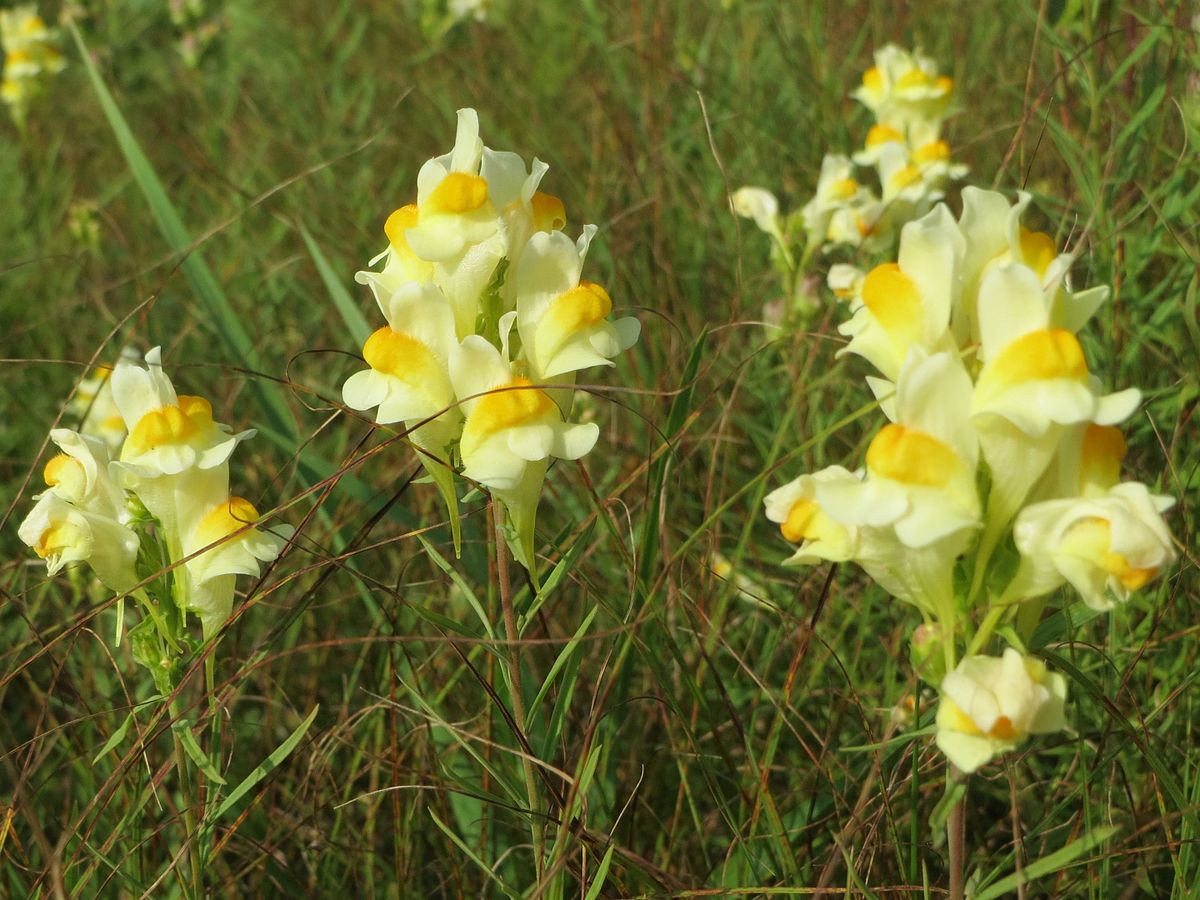
Lupine
Shrub, tall (up to 120 cm) perennial. Peduncles are straight, powerful, blue-purple inflorescences are tied at the ends in the form of brushes.
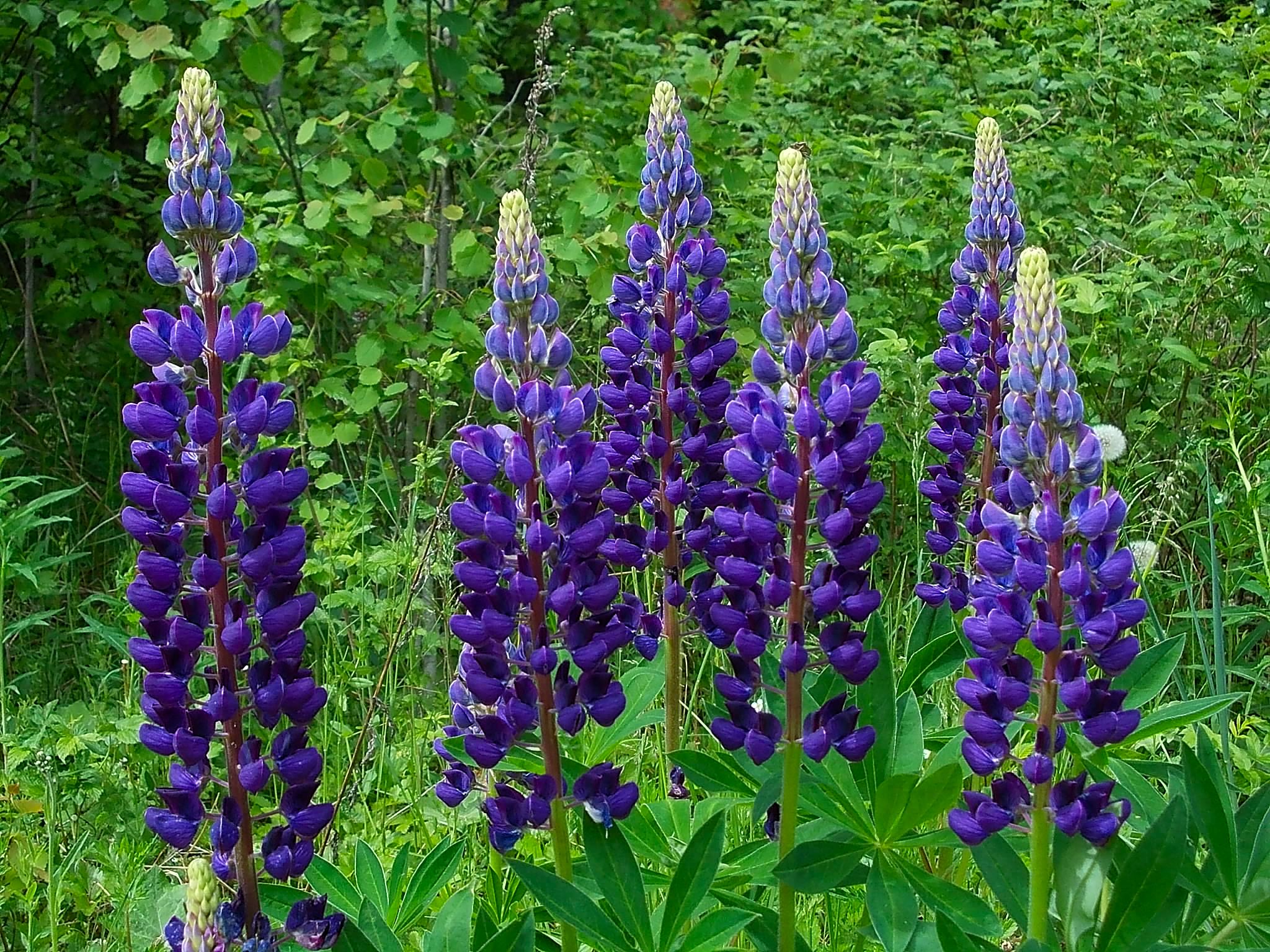
Coltsfoot
Medium-sized (up to 30 cm) perennial. Peduncles are straight, single yellow buds are formed at the ends. The foliage on top is smooth, velvety from the inside, grouped into a basal rosette (becomes noticeable after the flowers wither).

Mouse peas
Perennial, creeping stem, stretches 1.5 m. Leaves are microscopic, almost invisible, ash-green. The flowers are medium-sized, with a dense violet-pink color scheme. The foliage is palmate, slightly covers the stem, forms a basal rosette. The culture grows in the middle lane.
Dandelion medicinal
Tall perennial, stretches up to 69 cm. Stems are straight, without a core, produce milky juice. At the ends, single buds of a rich yellow color are formed. The foliage is elongated, feather-like, grouped into a basal rosette.
Rattle
Low-growing (up to 50 cm) plant. The stem is thin, the foliage is narrow. Forms inflorescences of a sandy shade, resembling hoods. Fruits of a capsule type, seeds in windy weather rattle with a dull sound, for which the people called the plant a bell.
A serious parasite - a weak root system is not able to suck out useful substances from the soil, therefore the culture braids its neighbors, feeding on them.
- Rattle
- Dandelion medicinal
- Mouse peas
pharmaceutical camomile
Annual, tall (up to 60 cm) culture. The stem is straight, forms shoots near the ground. At the end, a single bud with white petals and a yellow center is formed. The leaves are narrow, carved. Chamomile is widely demanded in cosmetology and medicine.

Spiraea
Tall (up to 80 cm) perennial. Foliage on extended legs, finger-like. The flowers are small, pink and white, forming an elongated oval inflorescence.
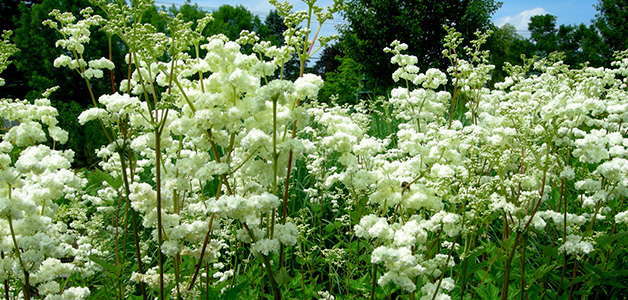
Timothy grass
Perennial semi-shrub species. The stem is straight, covered with feather-like complex leaves. At the end, numerous branches are formed with basket inflorescences, densely covered with white and pinkish flowers.
Yarrow
Perennial of the family Astrovye, semi-shrub type. The stem extends up to 1 m. The foliage alternates, the form is carved or pinnately dissected. A single corymbose inflorescence (diameter 10–20 cm), formed from small baskets. The flowers are white. The branchy rhizome grows rapidly into the thicket. Yarrow grows in European and Asian meadows.
Horseradish ordinary
Tall perennial (up to 1.5 m). Leaves on dense petioles, united in a basal group. The stem is branched, straight. Forms inflorescences with small white buds. Found everywhere. The roots and foliage are harvested for medicinal and culinary purposes.
- Horseradish ordinary
- Yarrow
- Timothy grass
Common chicory
Tall perennial (up to 1.5 m). Peduncles are straight, massive, branching. At the ends, numerous buds are formed, with blue-blue petals. The foliage is united in a root rosette, half-covering the stem. Common chicory is widespread. Used in cooking, medicine. A drink similar to coffee is obtained from the roots.

Thyme
Medium-sized (up to 40 cm) perennial. The creeping stem is covered with oval leaves, pink-purple inflorescences are formed at the ends. Smells good, used for making tea, as a seasoning.It is in demand in cosmetology and as a medicinal plant.
Celandine
Tall (up to 1 m) perennial. The foliage is massive, oval or three-leafed. Stems are thin, form umbellate inflorescences with rich yellow buds.
Sap squeezed out of stems and foliage can cause irritation. It is used to treat warts and papillomas.
Echinacea
Tall perennial (up to 1 m). Stems are oval, straight, rough. Leaves are oval, elongated, wide. The flowers are massive (up to 15 cm), united in basket inflorescences. The flowers are colored in different shades of pink, red and brown.
- Echinacea
- Celandine
- Thyme
Eschsholzia
Medium-sized (up to 45 cm) perennial. Loves a lot of light. Stem thin, leafy, holding single velvet buds, white or orange, in the form of a bowl. Flowering period: early June - mid-autumn.

Meadow flowers are good not only for creating bouquets. These wild crops look great on Moorish lawns and alpine hills, they can be used to decorate the shores of an artificial reservoir or the area near the gazebo. And at the same time you will become the owner of useful medicinal plants growing right at the front porch of the house.

